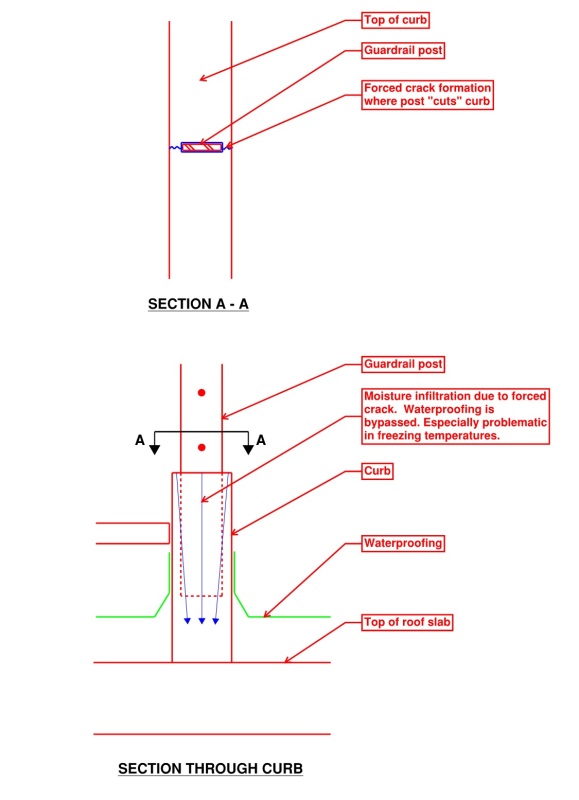DETstru
Structural
- Nov 4, 2009
- 395
I sent this diagram to an architect to illustrate my concerns about a detail they proposed for an embedded guardrail post on the exposed rooftop amenity space of a concrete building I'm designing.
The diagram is somewhat to scale. Just wondering if anyone thinks my concerns are valid or if anyone has additional thoughts on it.
[ol 1]
[li]I have concerns about water infiltration through the crack that will inevitably form at the embedded post.[/li]
[li]Getting this to pencil out structurally will be tough. I'll need DBA's or studs welded to the post to anchor it into the curb/stem wall. Then sufficient vertical dowels coming up from the concrete slab to anchor the curb into the slab. (I'm unsure how the development length of those dowels will even work since I'll have a moment directly at the top of the curb, where the dowels are not developed at all)[/li]
[li]And even if I do manage to make it work on paper, building this will be a nightmare. I can already hear my phone ringing with contractor complaints....[/li]
[/ol]

The diagram is somewhat to scale. Just wondering if anyone thinks my concerns are valid or if anyone has additional thoughts on it.
[ol 1]
[li]I have concerns about water infiltration through the crack that will inevitably form at the embedded post.[/li]
[li]Getting this to pencil out structurally will be tough. I'll need DBA's or studs welded to the post to anchor it into the curb/stem wall. Then sufficient vertical dowels coming up from the concrete slab to anchor the curb into the slab. (I'm unsure how the development length of those dowels will even work since I'll have a moment directly at the top of the curb, where the dowels are not developed at all)[/li]
[li]And even if I do manage to make it work on paper, building this will be a nightmare. I can already hear my phone ringing with contractor complaints....[/li]
[/ol]

